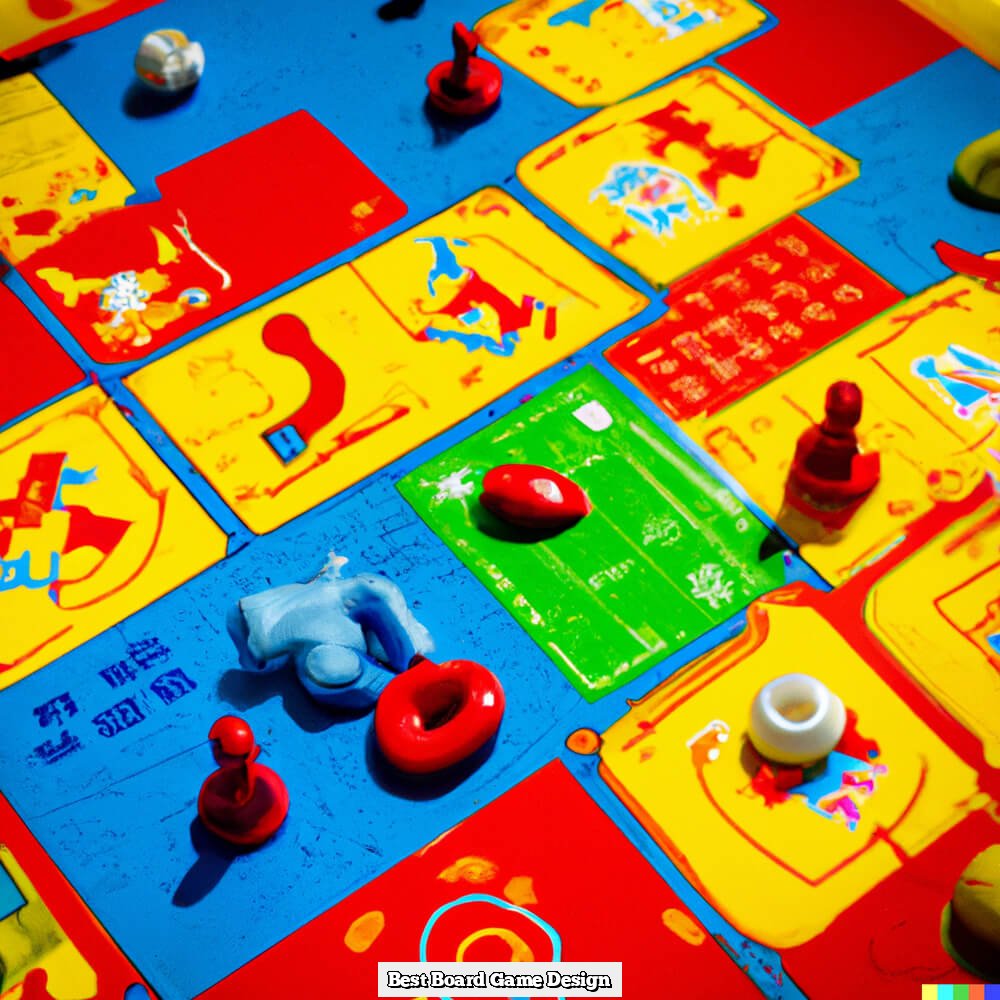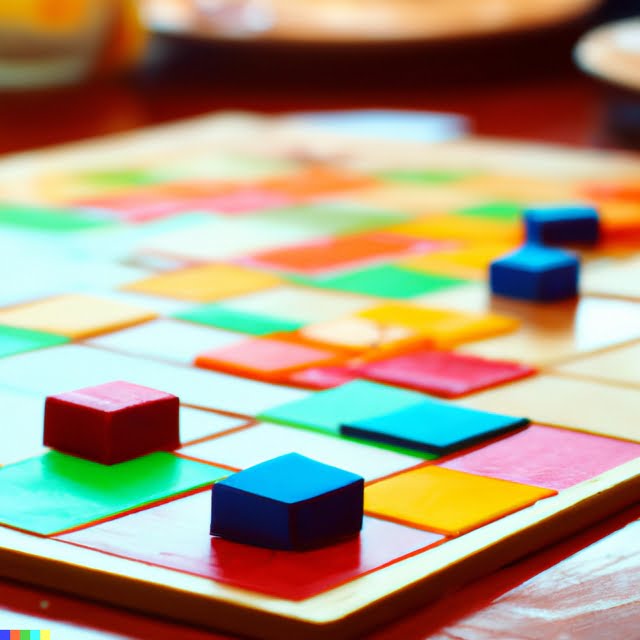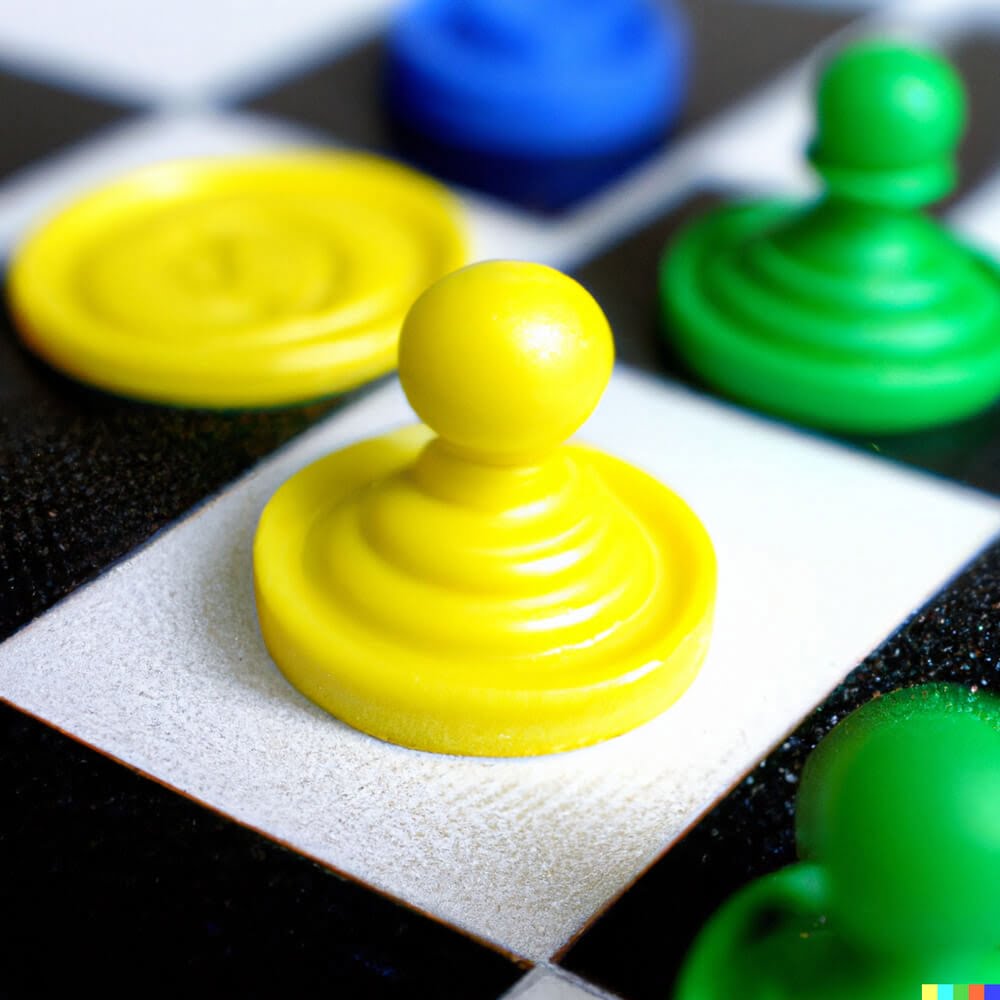Introduction
Designing a board game book can be an exciting and creative way to bring the fun of board games into your home. In this article, we will provide an overview of what board game books are and how they can be designed. We will discuss the ingredients necessary to create a successful book as well as tips on incorporating artwork and other materials that can help to make the book come alive. Additionally, we will explore some key concepts related to theme, mechanics, and components that experienced game designers use when constructing a truly unique gaming experience. Finally, we’ll explain how you can use the internet to source inspiration for your own designs. With this knowledge in hand, you’ll be able to craft a wonderful board game book that’s sure to delight family members, friends, and even strangers!
Exploring Various Types of Games
A project to design a board game book begins with an exploration of the different types of games available. Board games come in a variety of genres, so it helps to determine what type would best fit the objectives. Strategic games such as chess, checkers and draughts are good for developing problem solving skills, while party and family-style games offer fun and entertainment. There are also abstract or mathematical-style games which require players to use critical thinking and decision making. Each type appeals to different age groups and levels of expertise, so be sure to consider your target audience when deciding which type would make for an engaging game design.
Once the type has been determined, it’s time to research similar board game books that have been published. It’s important to read these books thoroughly in order to gain insight into how successful designs came together from strategy, flow and rules. Depending on the type chosen, boards should be designed so that passages can be blocked off or open depending on which pieces move around in a certain way or arrangement.
The rules must be clearly written with enough detail that someone unfamiliar with the game could understand them without too much struggle it is also helpful to include diagrams or illustrations where needed. Lastly, create a fun title that captures the idea of the game being played while indicating its genre (Family Fun Night: A Collection of Party Games or Master Minds: A Compilation of Strategic Challenges). By following these steps one should have all the materials needed to design an exciting new board game book!
Creating a Winning Strategy
Designing a successful board game book requires a combination of creativity and strategy. The best way to achieve success is through careful planning beforehand. First, you need to develop a concept that meets the criteria for your book’s audience. To do this, research popular board games and identify aspects you can use in your own design. Then narrow down the scope of your game and make sure it follows basic rules for boards such as shape, number of players, type of player turns, board elements, etc. Set tangible goals for yourself such as visual appeal, complexity, how smoothly play progresses from turn to turn – even if it has to be iterative -and ultimately how enjoyable the experience will be for players of all skill levels. Additionally, create an interesting storyline that ties into gameplay and keeps players engaged throughout their journey with the game. Meanwhile consider balance; ensure there are no strategies that give one player an undue advantage over another before it’s released to the public. Lastly test out different strategies in order to select what works best, have key stakeholders review your work during development and take on-board advice they offer – after all they may be playing it!
Choosing the Right Game Pieces
An important step in designing a board game book is deciding what kind of pieces the game should include. The type of pieces chosen will depend on the game’s theme, mechanics, and desired audience. Board games can involve physical pieces such as dice and spinners or tokens such as pawns and units; these pieces may come in various colors, sizes, and shapes. They must be durable and easy for players to identify when playing the game. Additionally, complex pieces may help add depth and strategy to the gameplay, making it more enjoyable for players. It is important to think through every detail each piece requires and create a plan of action for ordering them if necessary.
Planning the Board Layout
Designing the board layout for a board game book can be an exciting but challenging task. The first step is to determine the general shape and size of the board. Depending on the complexity of the game, this will typically include establishing how many squares, circles, or other shapes will form the locations, as well as where they will all fit on the page.
Once you have a general outline of your board layout established, you will need to come up with visual cues that indicate which types of pieces can move on certain areas of the board. This could include using different shapes (like squares or rectangles) or colors (like yellow for safe spaces and red for dangerous spaces), and maybe even symbols to represent various types of action (like arrows to show how pieces can move). Additionally, you may need to add some text or instructions around the board so players know how different parts work together within your game.
After you decide upon your design elements, it’s important to make sure everything works together on the page visually; then it’s time to test out your designs on actual boards to ensure everything looks balanced when laid out in front of someone. Lastly, think about convenience: are players able to recognize their moves quickly and easily? Is it easy for them to remember where each piece should go or what action can be taken in that space? Asking yourself these questions during your design process will help ensure an enjoyable experience for whoever plays your game!
Designing Interesting Cards and Boards
Defining the goals of your board game book is essential for success. The cards and boards should relate to the objectives and be designed around what kind of player experience you are trying to create. Do you want a game that requires strategy, luck, or both? Are there special characters with individual abilities, like in a role-playing game? Once you’ve decided on the basic rules, you can start planning out your cards and boards.
The first step in designing your cards and boards is deciding on their size, shape, and number. Consider if a standard deck of playing cards fits into your theme or size needs before committing to them as an option. Next, consider using artwork or symbols that represent the elements of play ” such as a castle for defending one’s own territory ” as well as any types of special powers available to players during the game. When it comes to card design, include a title at the top followed by descriptions that explain how players can use those cards ” such as how much damage they cause when played in battle. For boards, color coding different territories or areas may be helpful for gameplay purposes and make understanding the board easier for novice players. Finally, don’t forget about additional items like pawns or spinners which add an extra element of fun to the game!
Rule Books
When writing rule books for board games, it is important to ensure that all the necessary rules and instructions are included as clearly and concisely as possible. First, you should give players a brief overview of the game; what type of game it is, what pieces are being used and any other narrative information. Then, introduce the game objectives and explain in detail how to play. Break down each step with easy-to-follow directions and make sure to describe any special elements or exceptions that may exist within the game. Finally, include diagrams whenever possible so that players can visualize game steps more easily. Once the rules have been laid out, be sure to review them with a few testers before making the final version available. This will help pinpoint any potential problems or confusion that players may have when attempting to play the game. By including these essential details in your rule book, people will be able to play your board game with ease!
Utilizing Art in Your Design
When it comes to designing a board game book, art can be a very important element to include. Adding artwork to your book design can help create an immersive experience for players and make your game look more professional and eye-catching. Before you begin designing, take some time to think about the type of art that best suits your game’s theme and genre. Once you’ve made your selection, consider how the artwork can be incorporated into the design of the board game book, such as using pictures or graphics on the cover, on each page throughout the book or for illustration purposes to enhance storytelling elements. Each element should work together in harmony with colors that compliment each other and carry through from page to page. Art is also a great way to highlight key game rules and instructions ” adding visual cues where necessary will help ensure players understand gameplay easy. When you’re happy with your design, get feedback from fellow gamers and friends, then if needed make any adjustments prior to printing.
Finding the Best Material for the Pieces
When designing a board game book, it is important to consider the material for the pieces that will be used. Choosing appropriate and safe materials can have a large impact on how enjoyable the experience is for players. Depending on the desired look or style, different types of materials can be utilized to make the game pieces. Cardboard can be cut into different shapes or printed with artwork and text to give an old school aesthetic. Durable plastic pieces come in a variety of shapes, sizes and colors and are great for pieces that will see regular use during gameplay. Wood is also another great option as it can provide unique designs that are more aesthetically pleasing than other materials while still being durable enough for regular gameplay. Additionally, metal pieces are great when wanting to create highly detailed 3D designs. It is important to consider the size of each piece in relationship to how it affects gameplay as larger pieces may make certain moves more difficult than intended, while smaller pieces can make game play become unpredictable due to their lightness.
Packing It All Together for Maximum Efficiency
One way to maximize efficiency when designing a board game book is to organize it in a way that will make it easy for people to go through the material and find what they need. You should use headings, subheadings, and label sections clearly with written descriptions. This will help people quickly identify the section they want to look at so they can get what they need as easily as possible. Additionally, you can give pointers or hints throughout the book on where to find certain items so readers don’t have to spend time scanning an entire page trying to locate a single element. Labeling diagrams and illustrations clearly will also be helpful so that viewers know what each piece of the game looks like. Lastly, adding tips on how to improve game play can be beneficial because this extra information can help readers create more enjoyable gaming experiences for themselves and others.
Attractive Cases
When designing a board game book, it is important to consider the type of case you will use to package and protect your valuable contents. A board game book can be dressed up or down with a variety of cases styles that range from unique and stylish hardback covers to simplistic soft cover options.
Hardback Covers: If you want to make your board game book stand out, go for a luxurious hardback cover. These types of covers offer excellent durability while also providing a chic look to any project. Popular hardcover materials include leatherette, velvet, and silk along with a variety of decorative choices such as embedded minerals, foiling elements, and embroidery designs perfect for adding finesse.
Soft Cover: Soft covers are the most popular type of case for board game books due to their affordability, light weight qualities, and customization options. Soft covers come in almost every texture and color imaginable making them adaptable for any design concept. Not only are these full-color cases affordable but they can also be custom designed with die-cut shapes too! Whether you’re going digital with print on demand services or having multiple boxes printed from your own printer; these versatile cases are ideal for quite literally any budget level.
Other Ideas: For fun attractive ways to display your board gaming books try using wooden display boxes! Perfectly sized and shaped just like traditional books but equipped with clips on the corners which click into place when opening the box giving it an effective presentation style which is sure to impress both friends and guests alike!
Finishing Touches for an Experienced Look
Before you submit your board game book for printing, there are some very important finishing touches that will give your book an experienced and professional look. You should consider tweaking the design of the board and pieces, adding colourful inserts or instructional pages, rendering 3D models to demonstrate examples of play, and studying up on materials and cutting techniques to ensure all your pieces are cut accurately. Additionally, customizing a box that serves both as an attractive artwork display piece as well as necessary storage for pieces is a great option and can really help make your game stand out. Lastly, investing in some high-quality game tokens can add a level of sophistication to the overall aesthetic of your product – though be mindful of costs here if mass-producing. With just a few extra details added in at the end, you really can make your game book look like something off the shelf.
Testing and Final Exams for Quality Control
When designing a board game book, the importance of quality control cannot be overstated. Testing of the board game is part of the design process and should not be ignored. After all components have been selected and the rules finalized, testers should be enlisted to playtest the game and provide feedback. Recommendations and revisions can then be made based upon evaluations from multiple players who are knowledgeable about similar types of games.
Once testing is complete, final examinations should then take place to ensure that all elements remain in-tact during commercial production of the board game book. This involves looking at sample components containing all materials to double check measurements, printing processes, boardgame mechanics, and packaging designs. Quality control inspectors can also review these items to make sure that every part meets professional standards so chances are slim for costly errors later down the line. Finally, if necessary assessments relating to legal matters related to this type of product should also be made.
Wrapping It Up
Once you have created the game and its components, it is time to add some finishing touches to your board game book design. If you are self-publishing, you may need to hire a graphic designer to create the visuals for your game book. Utilize their skills to create a visually appealing cover and pages that draw readers in. Additionally, experienced game designers suggest seeking professional advice when dealing with the typesetting of rules, particularly when it comes to making them both clear and concise. When finished, make sure you have printed prototypes of the game to test before finalizing production logistics such as selecting a publisher or making key decisions about printing. Above all else, remember the goal-to have fun! Enjoy creating a board game book and gathering around it with friends and family; after all, isn’t that what gaming is all about?
Before committing to working with a publisher or setting up production logistics for your board game book design there are some final details to attend to. You should procure professional proofreading services for accurate spelling and grammar throughout your document. This can cost extra but can greatly improve readability of your game rules as clarity is essential for enjoyment of the game play experience. Furthermore, think strategically about production costs – do you want to include comprehensive instructions written out in multiple languages so that people from anywhere will be able to understand how the product works? It’s also important at this stage of development to ensure that any artwork featured on box cover art or inside page designs is legally acquired from reputable sources before production begins. All these seemingly small details contribute significantly not only in terms of aesthetic appeal but actual functionality for readers using your product down the line. Investing in results-driven strategies at this stage will pay off in satisfaction with your finished work!

I love playing all kinds of games – from classics like Monopoly to modern favourites like Ticket to Ride.
I created this blog as a way to share my love of board games with others, and provide information on the latest releases and news in the industry.





